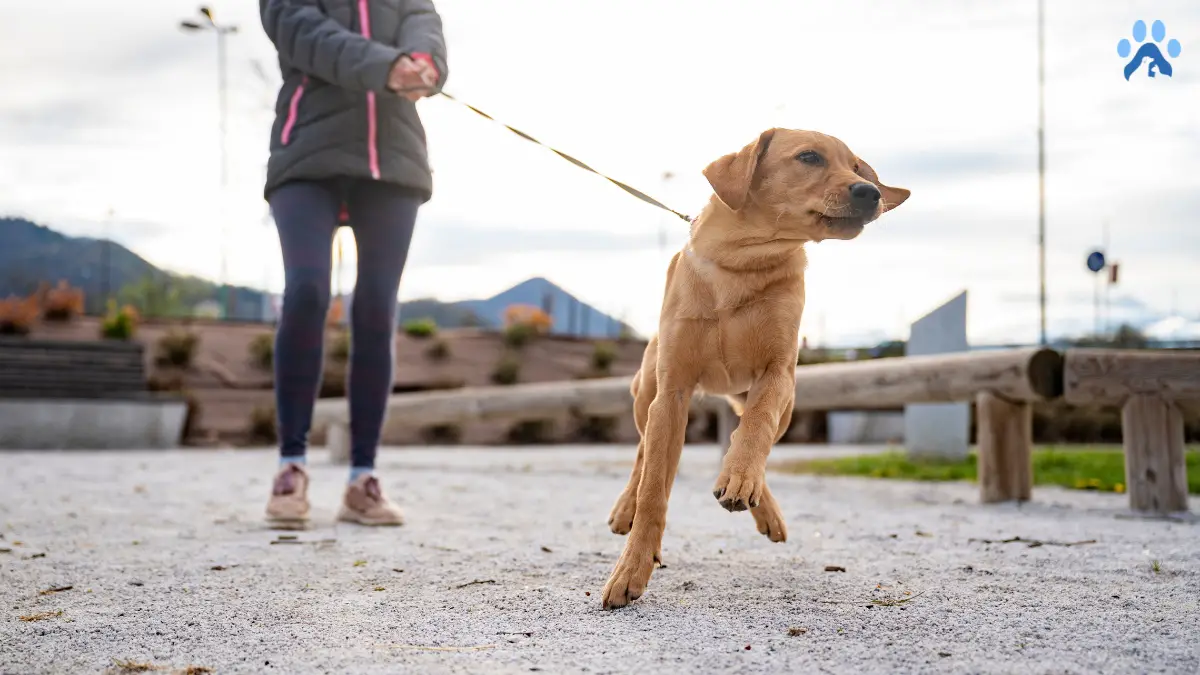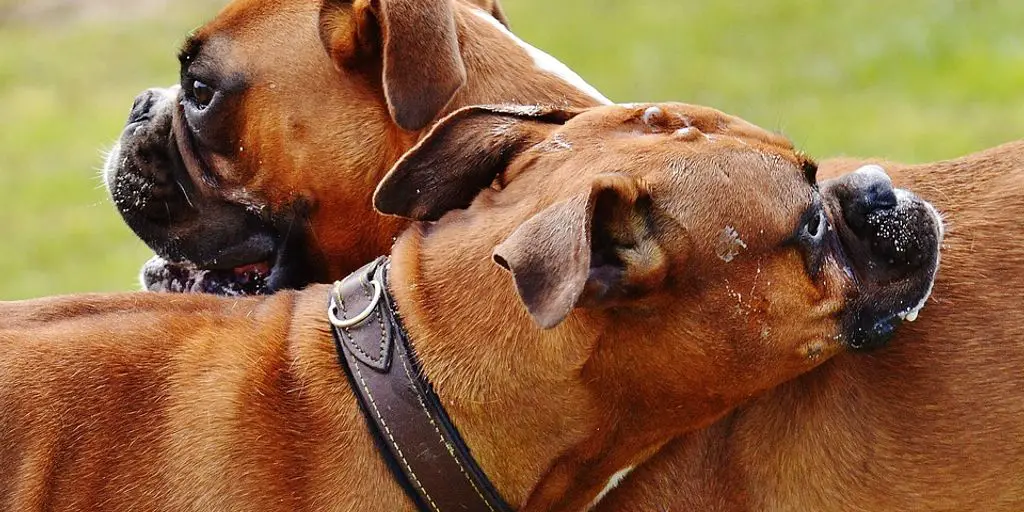If you’re a dog owner, you know how frustrating it can be when your furry friend pulls on the leash during walks. Not only can it be uncomfortable for you, but it can also be dangerous for your dog. Fortunately, there are several types of harnesses available that can help you stop your dog from pulling.
A no-pull dog harness is a great option for pet owners who want to train their dogs to walk on a leash without pulling. These harnesses are designed to minimize pulling by providing more control over your dog’s movements. They work by applying pressure to your dog’s chest or shoulders instead of their neck, which can be uncomfortable and even harmful for your dog. Some no-pull harnesses have a front clip that allows you to attach the leash to the front of the harness, which can help you control your dog’s movements more easily.
Choosing the right harness for your dog can be a bit overwhelming, but it’s important to find one that fits properly and is comfortable for your furry friend. In this article, we’ll take a closer look at how to stop a dog from pulling with a harness, including the different types of harnesses available, how to choose the right one for your dog and tips for training your dog to walk on a leash without pulling.
Understanding the Problem
Why Dogs Pull on Leashes
Walking your dog is an essential part of their daily routine. However, it can be frustrating when your dog pulls on the leash during walks. Dogs pull on leashes for various reasons, including:
- Excitement: Dogs are naturally curious and get excited when they see new things. This excitement can cause them to pull on the leash to explore their surroundings.
- Fear: Some dogs pull on leashes because they are scared of something. They may be trying to get away from the object or sound that is causing them to feel fearful.
- Lack of Training: Dogs need to be trained to walk on a leash. If they have not been trained, they may pull on the leash because they know no better.
- Energy: Dogs with high energy levels may pull on leashes because they need an outlet for their energy.
The Dangers of Pulling
Pulling on the leash can be dangerous for both the dog and the owner. Some of the dangers of pulling include:
- Neck and Throat Injuries: Dogs that pull on collars or choke chains can cause damage to their neck and throat, leading to injuries or even suffocation.
- Injuries to the Owner: Dogs that pull on leashes can cause their owners to lose balance, leading to falls and injuries.
- Destructive Behavior: Dogs that pull on leashes may exhibit destructive behavior, such as chewing on furniture or shoes.
To prevent these dangers, it is essential to find a solution that can help control your dog’s pulling behavior. A no-pull dog harness is an effective tool that can help prevent your dog from pulling on the leash. It is designed to distribute the pressure evenly across the dog’s chest, making walking on a leash more comfortable.
Leash training is also an effective way to teach your dog to walk on a leash without pulling. It involves teaching your dog to walk on a loose leash and rewarding them for good behavior. With patience and consistency, leash training can help your dog learn to walk on a leash without pulling.
In summary, understanding why dogs pull on leashes and the dangers of pulling is crucial for dog owners. Using a no-pull dog harness or leash training can help control your dog’s pulling behavior and make walks more enjoyable for both you and your furry friend.
Choosing the Right Harness
Choosing the right harness can make all the difference when it comes to stopping your dog from pulling. There are several types of harnesses available, each with its own set of features. Here are some things to consider when choosing a harness for your dog.
Types of Harnesses
- No-Pull Harness: A no-pull harness is designed to minimize pulling by giving you more control over your dog’s movements. These harnesses typically have a front clip that attaches to your dog’s chest, which helps to redirect their attention back to you when they start to pull.
- Prong Collars: Prong collars are not recommended as they can cause pain and injury to your dog. They work by pinching the dog’s neck when they pull, which can cause physical harm and lead to behavioral issues.
- Head Halters: Head halters, like the Gentle Leader, work by putting pressure on your dog’s snout when they pull. This can be effective for some dogs, but it can also be uncomfortable and take some time for your dog to get used to.
- Back-Clip Harness: A back-clip harness is the most common type of harness. It attaches to your dog’s back and can be effective for dogs that don’t pull as much. However, it can actually encourage pulling in some dogs, as it allows them to use their entire body weight to pull.
- Front Clip Harness: A front clip harness, like the PetSafe Easy Walk Dog Harness or the Frisco Padded Front Lead Dog Harness, attaches to your dog’s chest and can be very effective at stopping pulling. The front clip allows you to redirect your dog’s attention back to you when they start to pull.
Features to Look for in a Harness
- Padding: Look for a harness with plenty of padding to prevent chafing and discomfort.
- Adjustable Straps: Make sure the harness has adjustable straps to ensure a good fit for your dog.
- Easy to Put On: Look for a harness that is easy to put on and take off, as this will make your life easier.
- Reflective Material: If you plan on walking your dog in low light conditions, look for a harness with reflective material to increase visibility.
- Front Clip Option: If you’re looking to stop your dog from pulling, make sure the harness has a front clip option.
Overall, the best dog harnesses for stopping pulling are those that have a front clip option, plenty of padding, and adjustable straps for a good fit. Avoid prong collars and opt for a no-pull harness instead. With the right harness, you can enjoy a more enjoyable and stress-free walk with your furry friend.
Training Techniques
Training your dog to stop pulling on a harness requires patience, consistency, and positive reinforcement. Here are some effective techniques to try:
Positive Reinforcement
Positive reinforcement is a powerful training tool that involves rewarding your dog for good behavior. When your dog walks calmly on a loose leash, offer treats, praise, or playtime as a reward. This encourages your dog to repeat the behavior in the future.
To use positive reinforcement effectively, make sure you use high-value treats that your dog loves. You can also use a clicker to mark the behavior you want to reward. With consistent practice, your dog will learn that walking calmly on a leash is a desirable behavior.
Loose Leash Training
Loose leash training involves teaching your dog to walk calmly on a leash without pulling. One effective method is to stop walking whenever your dog pulls on the leash. Wait until your dog stops pulling and then resume walking. This teaches your dog that pulling will not get them where they want to go.
Another technique is to change direction whenever your dog pulls on the leash. This helps your dog learn to pay attention to you and stay close by your side. With consistent practice, your dog will learn to walk calmly on a loose leash.
Reward Pulling
Rewarding pulling may seem counterintuitive, but it can be an effective way to train your dog to walk calmly on a leash. To do this, attach a long line to your dog’s harness and let them pull you around in a safe, enclosed area. Whenever your dog pulls on the line, use a cue word like “pull” and offer a reward like a treat or a playtime.
Over time, your dog will learn that pulling is only rewarded in certain situations and will start to walk calmly on a leash in other situations. This technique should only be used in conjunction with loose-leash training and positive reinforcement.
Remember, training your dog to stop pulling on a harness takes time and patience. Consistent practice and positive reinforcement will help your dog learn the desired behavior. If you’re struggling to train your dog, consider working with a professional dog trainer who can offer guidance and support.
Dealing with Challenges
When it comes to using a harness to stop your dog from pulling, there are a few challenges that you may encounter. Here are some common issues and how to deal with them.
Chafing and Discomfort
One of the most common problems with using a harness is chafing and discomfort. This can happen if the harness is too tight or if it rubs against your dog’s skin. To prevent this, look for a harness with wider straps that distribute pressure more evenly. Some harnesses also come with velvet lining to prevent chafing.
Slipping Out of a Harness
Another challenge is when your dog slips out of the harness. This can happen if the harness is not properly fitted or if it is too loose. To prevent this, make sure you measure your dog’s chest and neck to get the right size harness. You can also look for harnesses with a carabiner clip or a double D-ring design for added security.
Nervous Dogs
If your dog is nervous or anxious, it may not take well to wear a harness. To help them get used to it, start by introducing the harness gradually. Let them sniff it and touch it before putting it on. You can also try using treats and positive reinforcement to make the experience more pleasant.
Remember that every dog is different, and what works for one may not work for another. If your dog has a small head or a lanky build, look for harnesses that are designed to fit these types of dogs. Some harnesses also have a shoulders-free design that allows for more range of motion.
In summary, using a harness to stop your dog from pulling can be an effective solution, but it’s important to address any challenges that may arise. Look for harnesses with wider straps, velvet lining, and added security features to prevent chafing, slipping out, and discomfort. Gradually introduce the harness to nervous dogs and look for designs that fit your dog’s unique body type.
Frequently Asked Questions
How to stop a dog from pulling on a leash?
A dog that pulls on the leash can be a frustrating experience for any owner. The best way to stop a dog from pulling on a leash is to use a no-pull harness. A no-pull harness works by redirecting the dog’s pulling force to the side, which makes it uncomfortable for the dog to pull. Additionally, leash training can be effective in teaching your dog to walk calmly on a leash.
What are the best harnesses to prevent pulling?
There are many types of no-pull harnesses available on the market. Some of the best harnesses to prevent pulling include:
- PetSafe Easy Walk Harness
- Ruffwear Front Range Harness
- Kurgo Tru-Fit Smart Harness
- Halti Training Harness
What are some effective leash training techniques?
Leash training can be a great way to teach your dog to walk calmly on a leash. Some effective leash training techniques include:
- Start with short walks and gradually increase the distance.
- Reward your dog for walking calmly on a leash.
- Use positive reinforcement techniques, such as treats and praise.
- Avoid using punishment or negative reinforcement.
How to teach a dog to walk calmly on a leash?
Teaching a dog to walk calmly on a leash can take time and patience. Some tips for teaching your dog to walk calmly on a leash include:
- Use a no-pull harness.
- Start with short walks and gradually increase the distance.
- Reward your dog for walking calmly on a leash.
- Use positive reinforcement techniques, such as treats and praise.
- Avoid using punishment or negative reinforcement.
How to stop a dog from lunging while on a walk?
Lunging while on a walk can be a dangerous behavior for both the dog and the owner. The best way to stop a dog from lunging while on a walk is to use a no-pull harness and to work on leash training. Additionally, it may be helpful to work with a professional dog trainer to address the underlying causes of the behavior.
What are some tips for walking a strong dog without pulling?
Walking a strong dog without pulling can be a challenge. Some tips for walking a strong dog without pulling include:
- Use a no-pull harness.
- Start with short walks and gradually increase the distance.
- Use positive reinforcement techniques, such as treats and praise.
- Avoid using punishment or negative reinforcement.
- Work on building your dog’s obedience and impulse control through training.
Sources:



